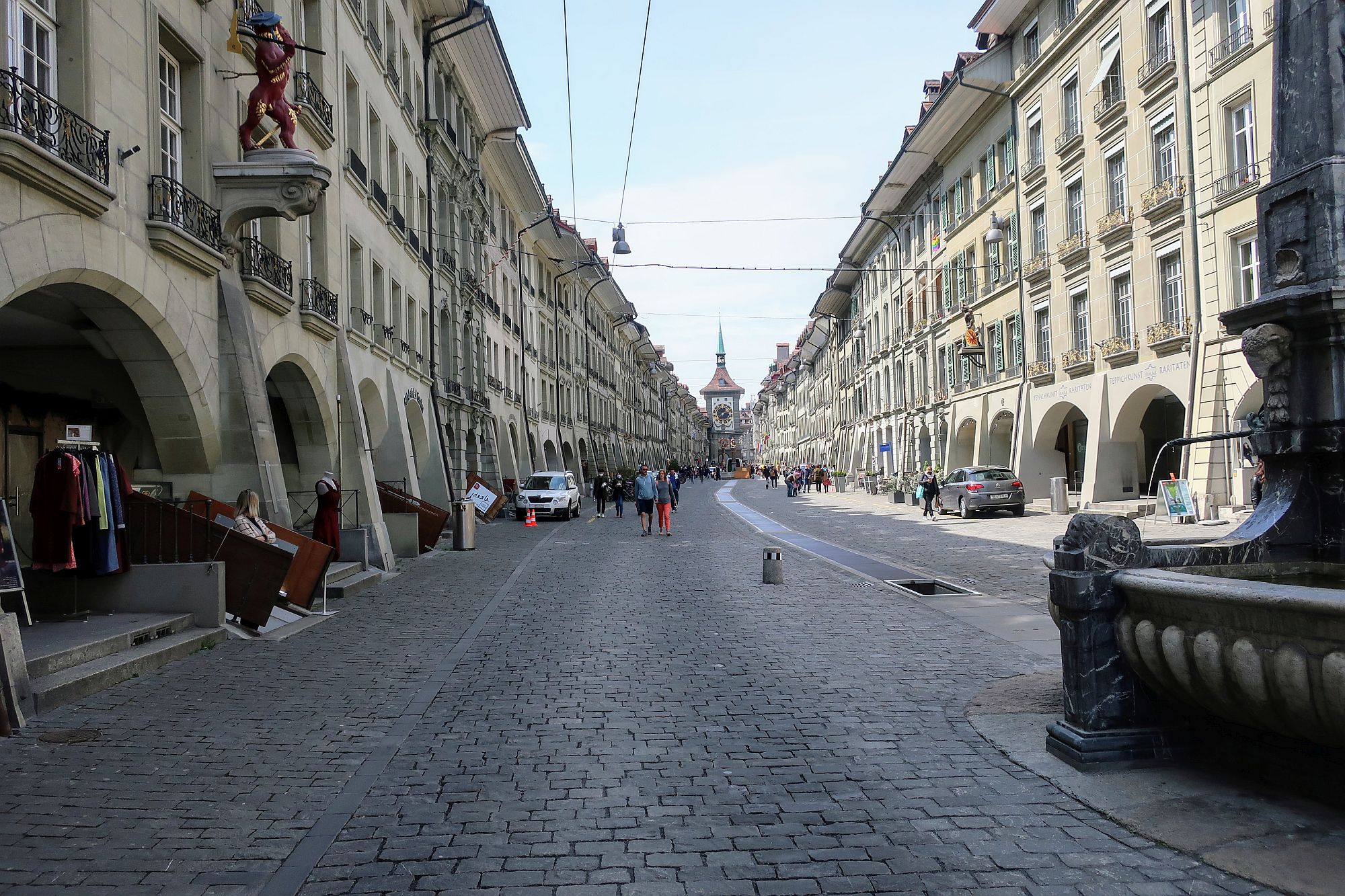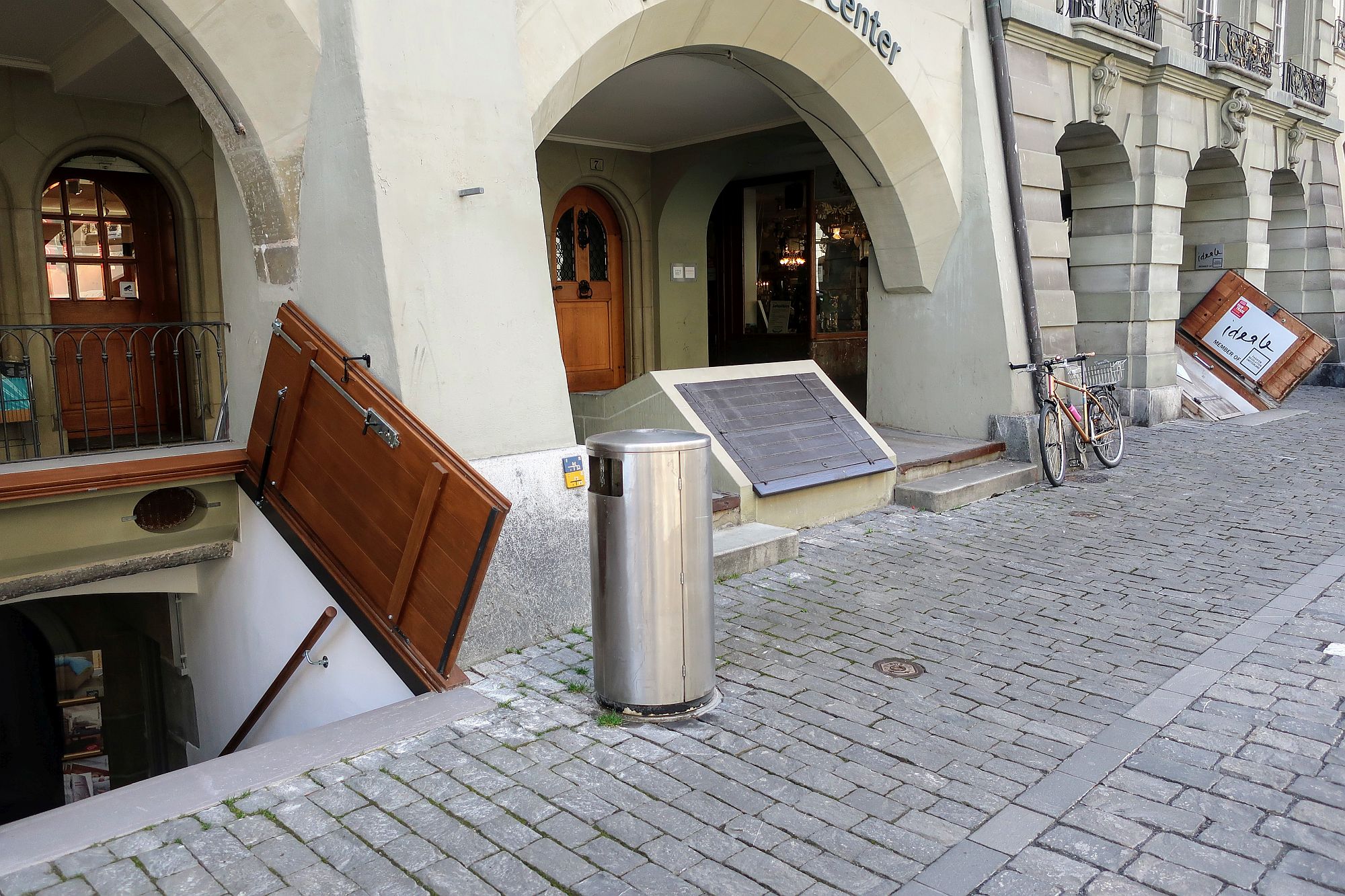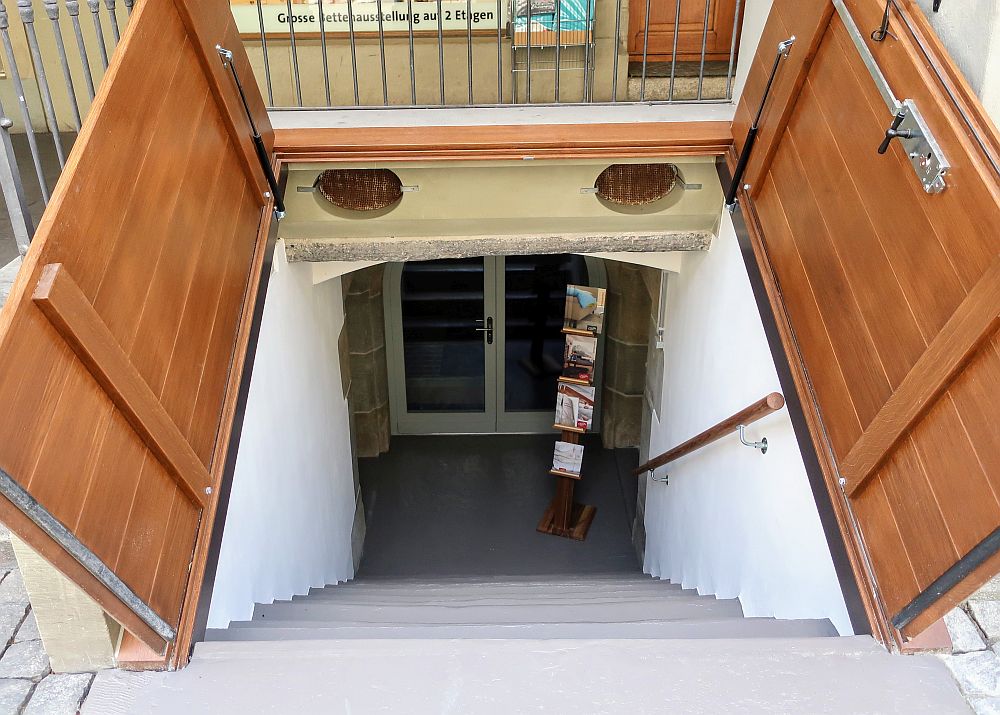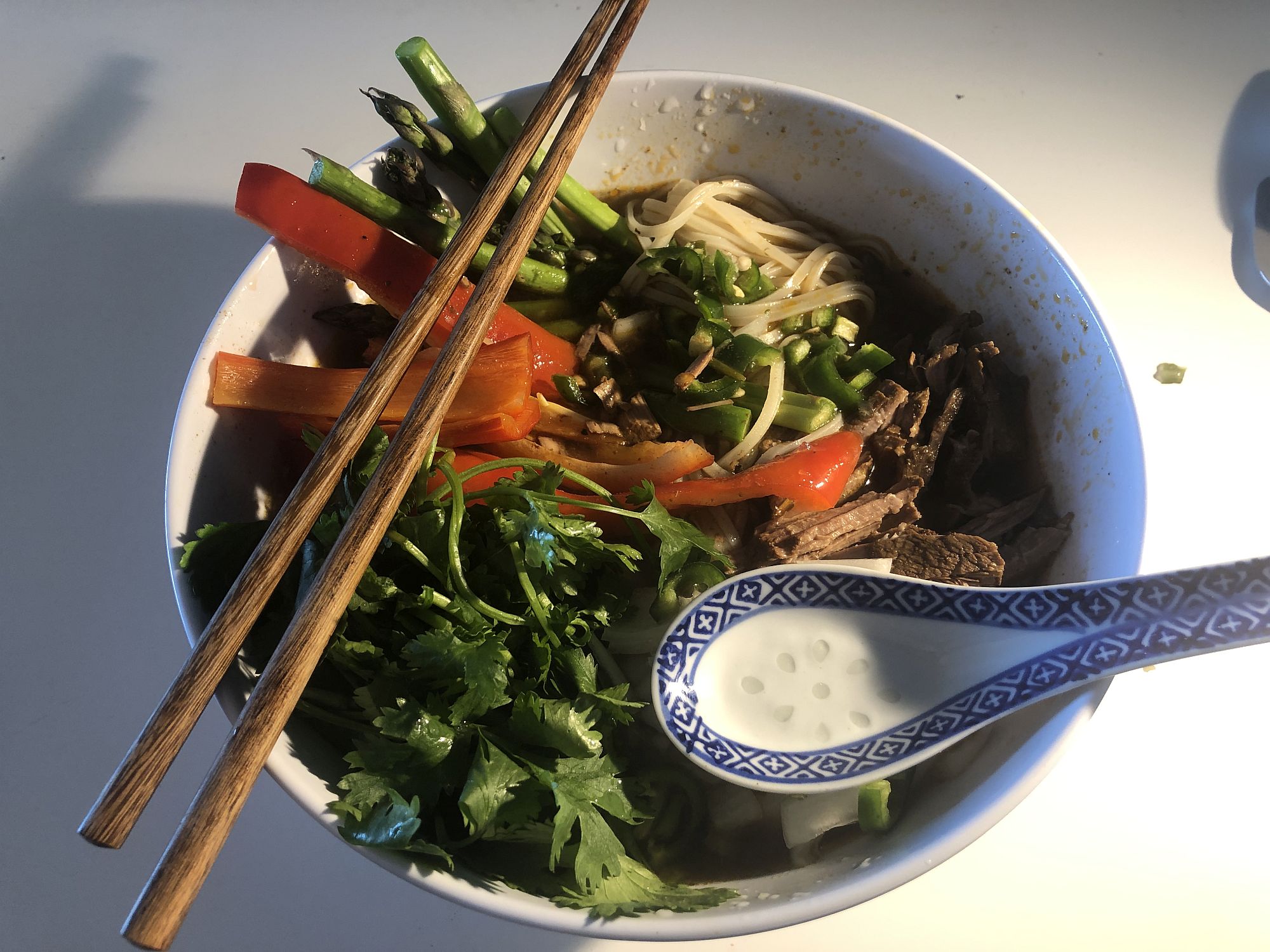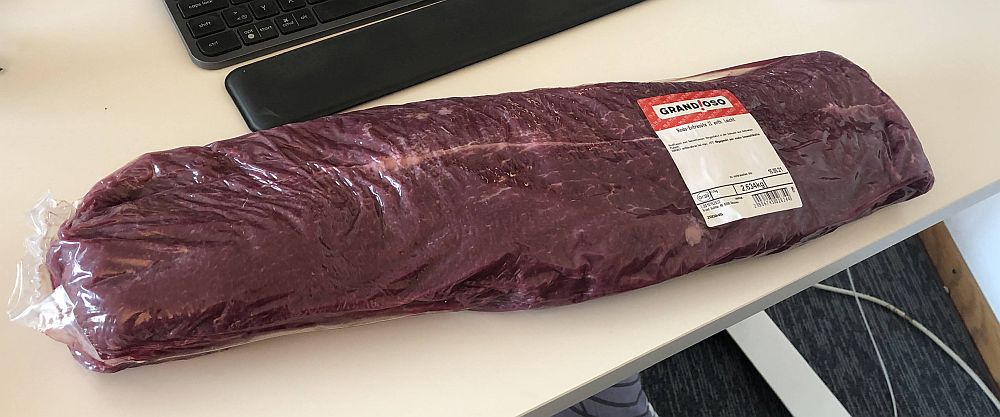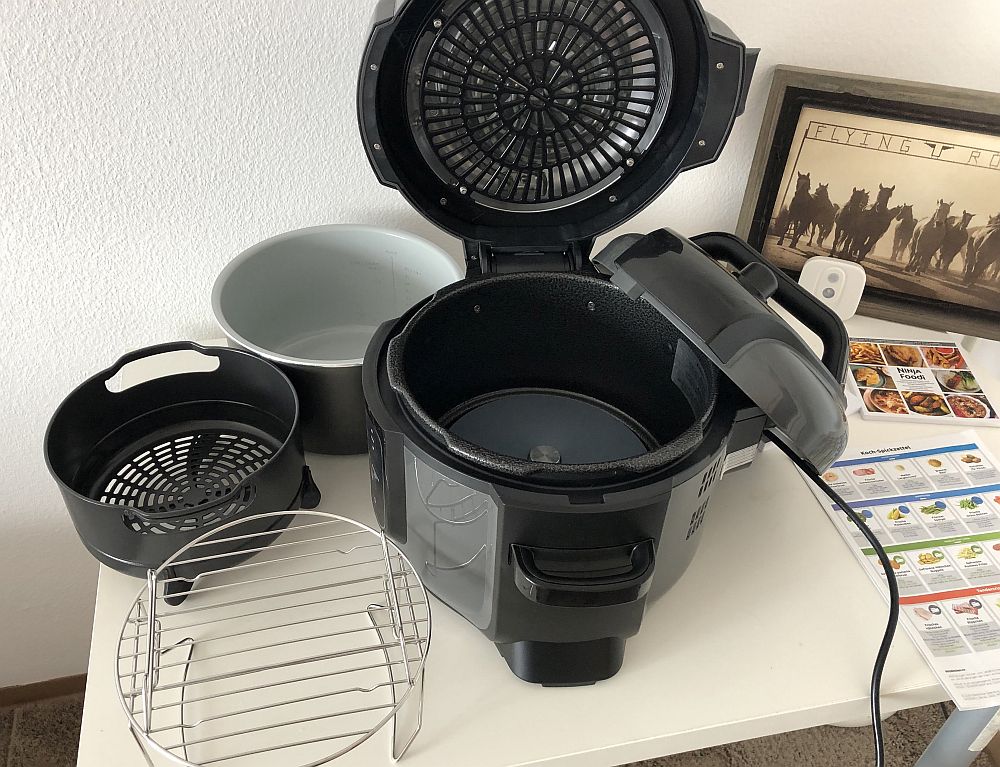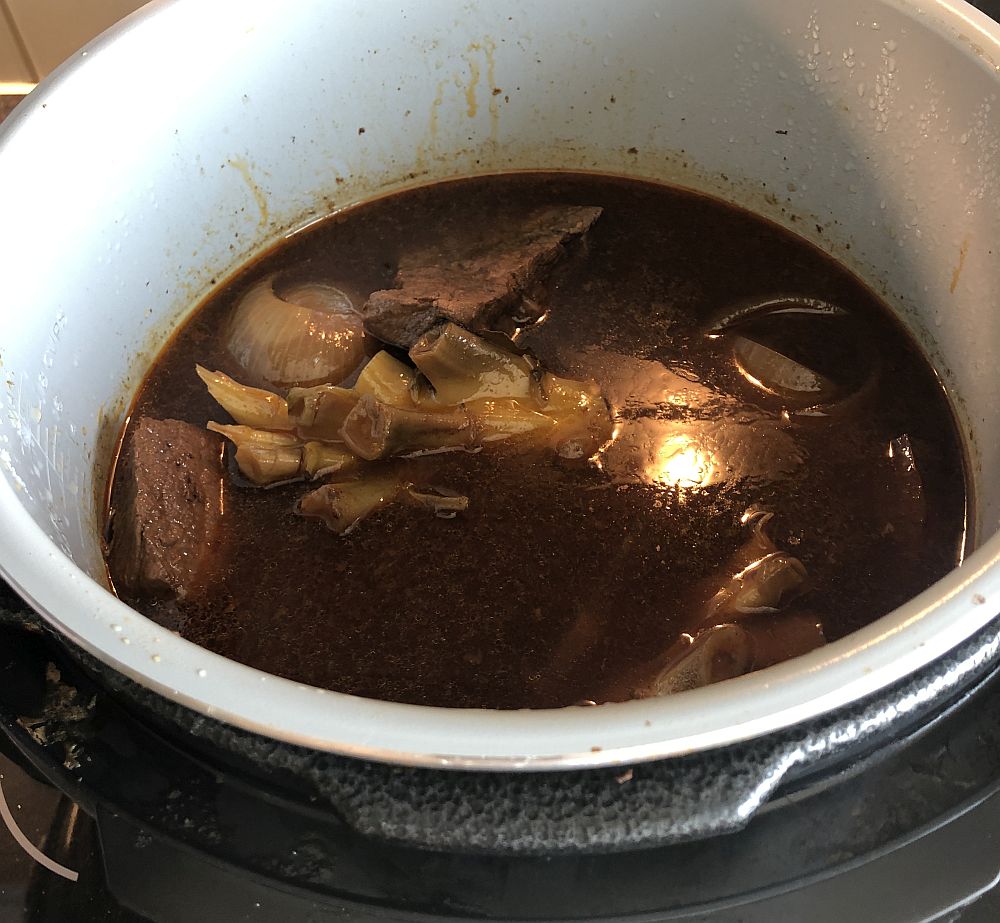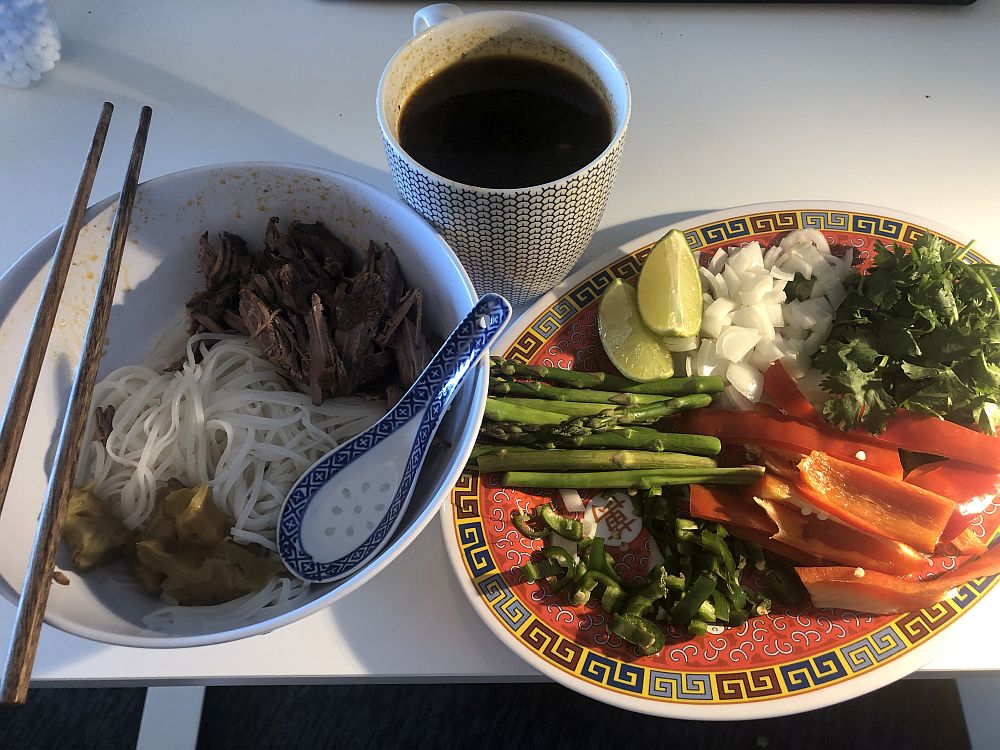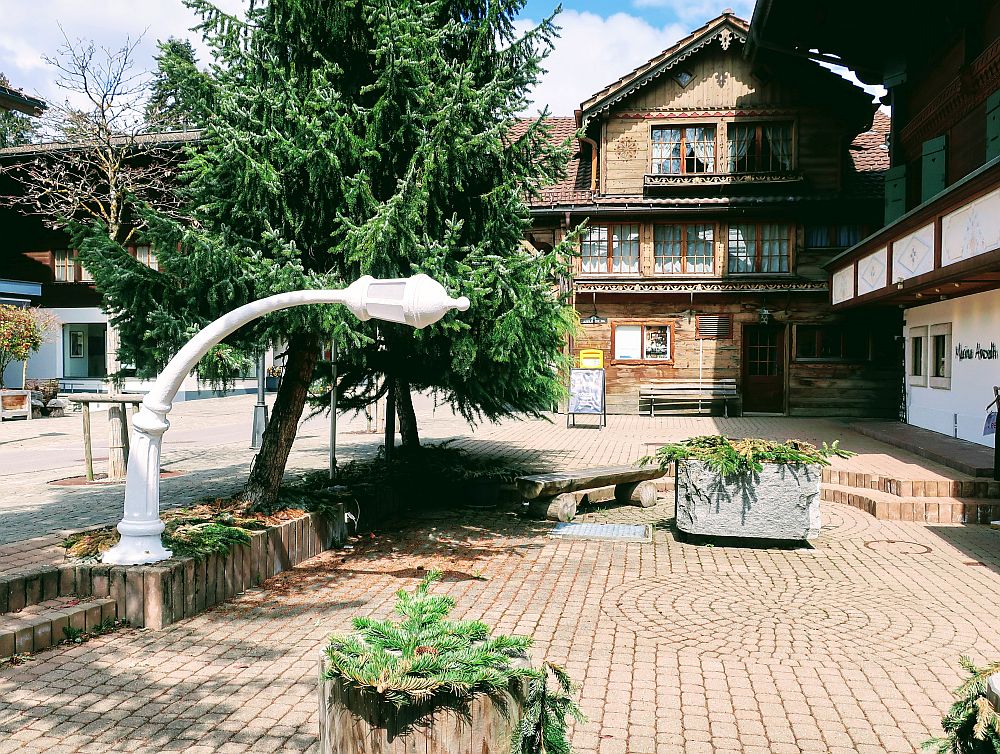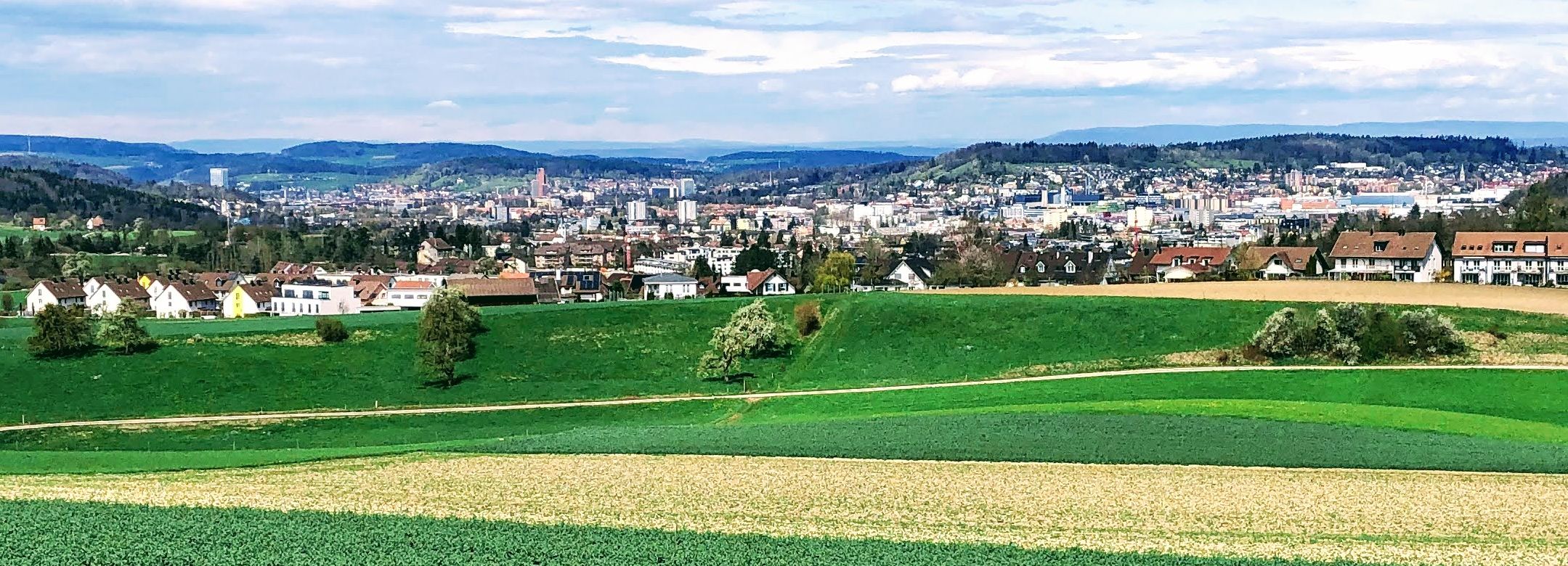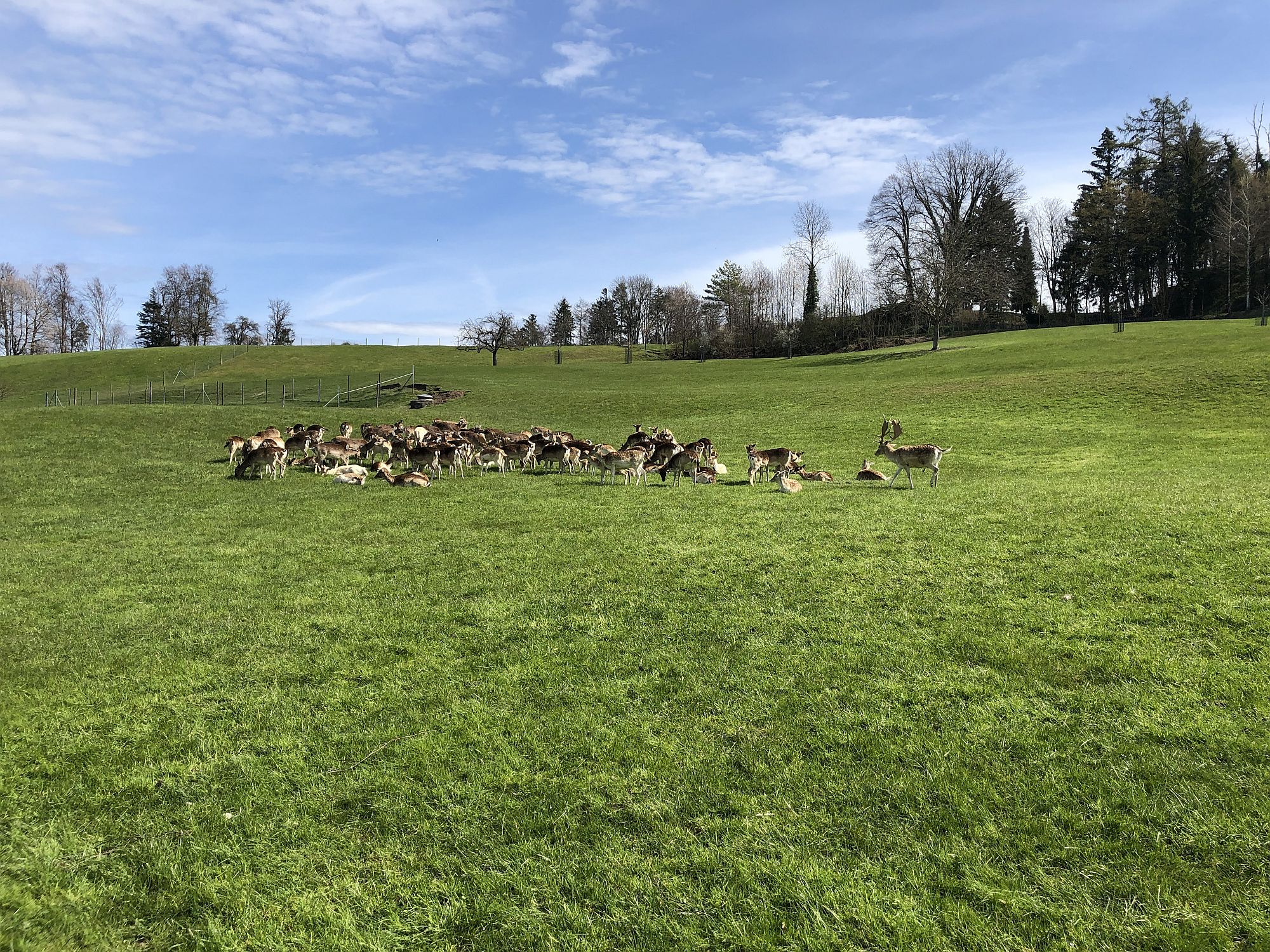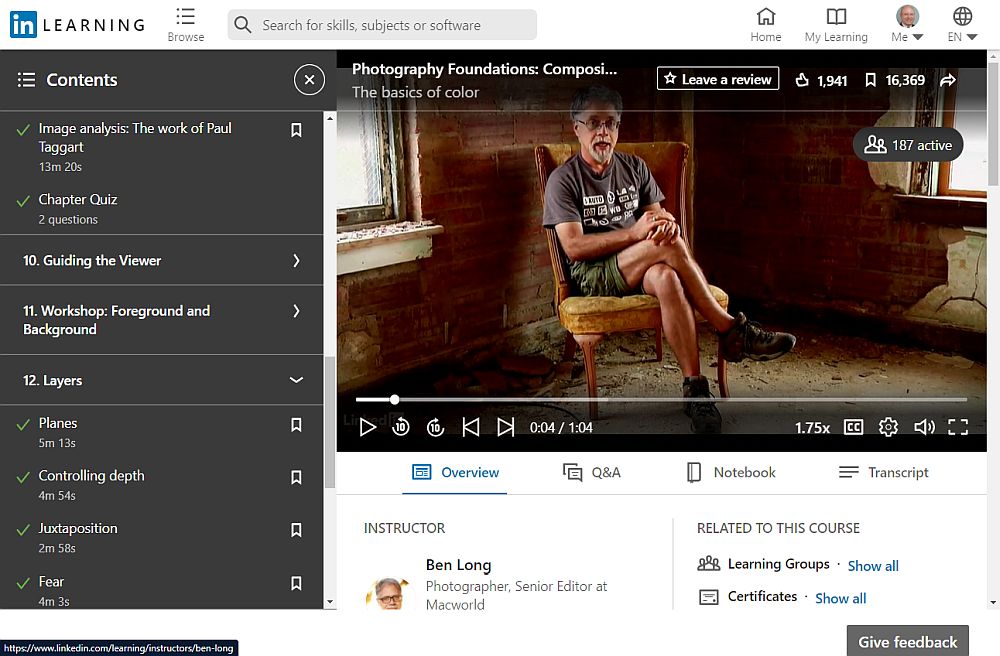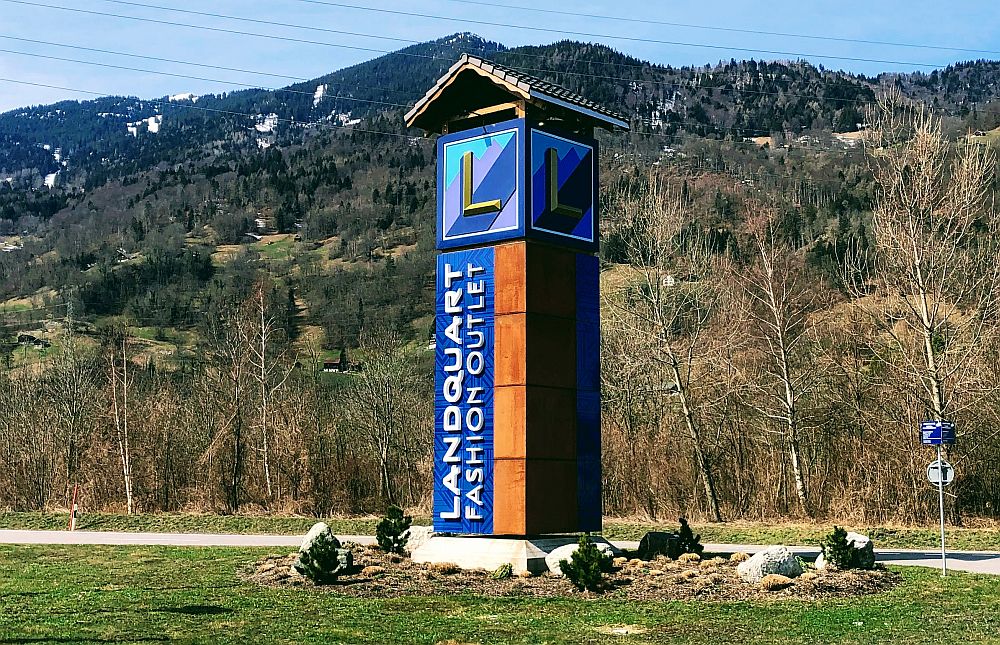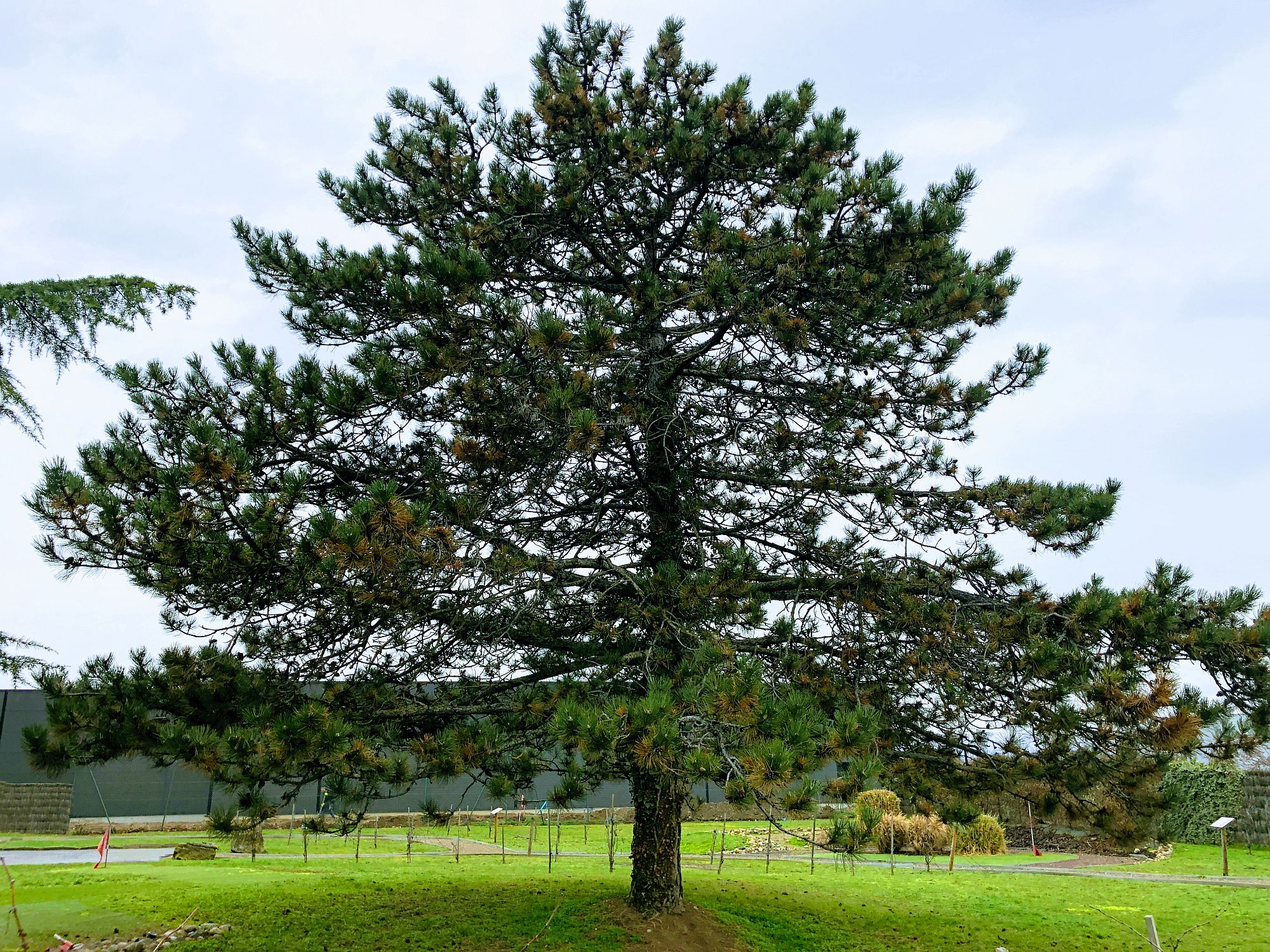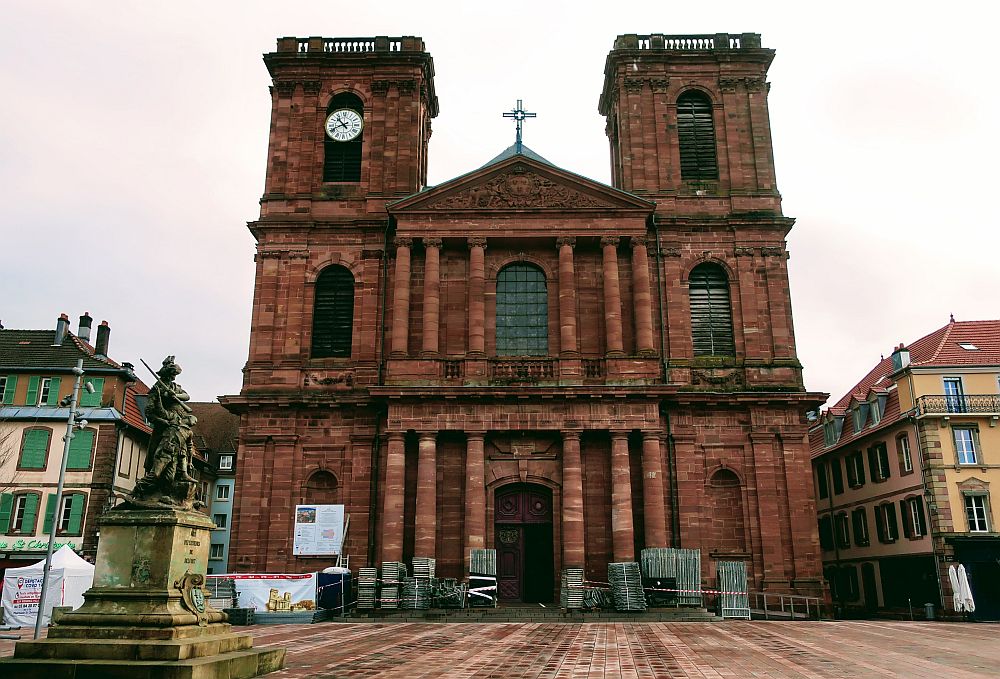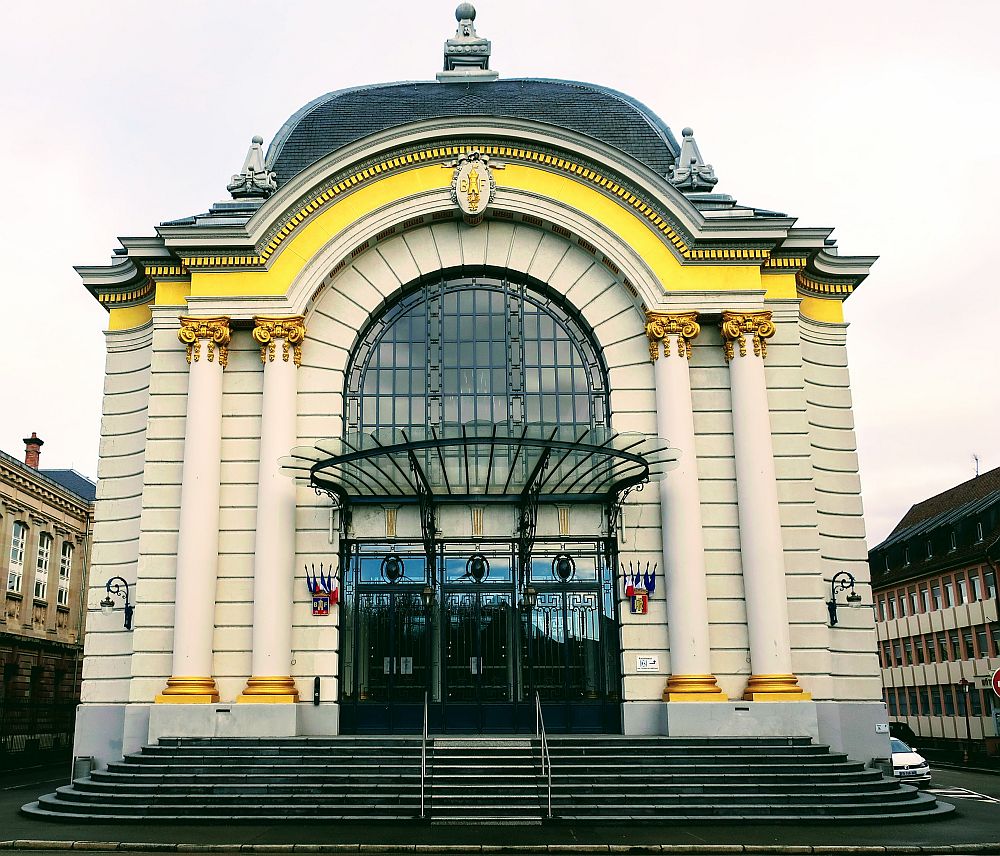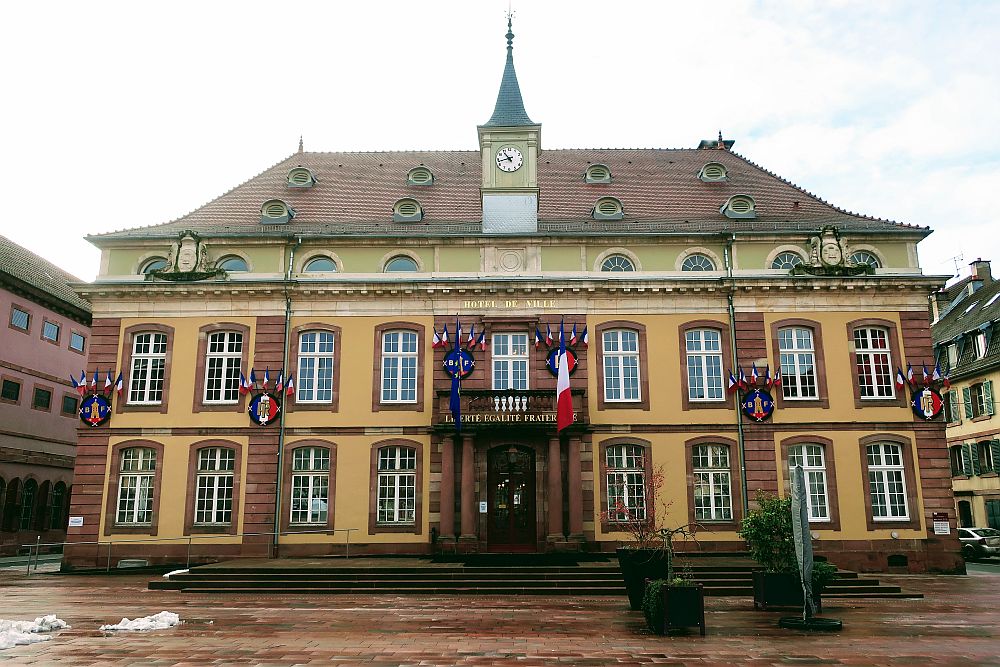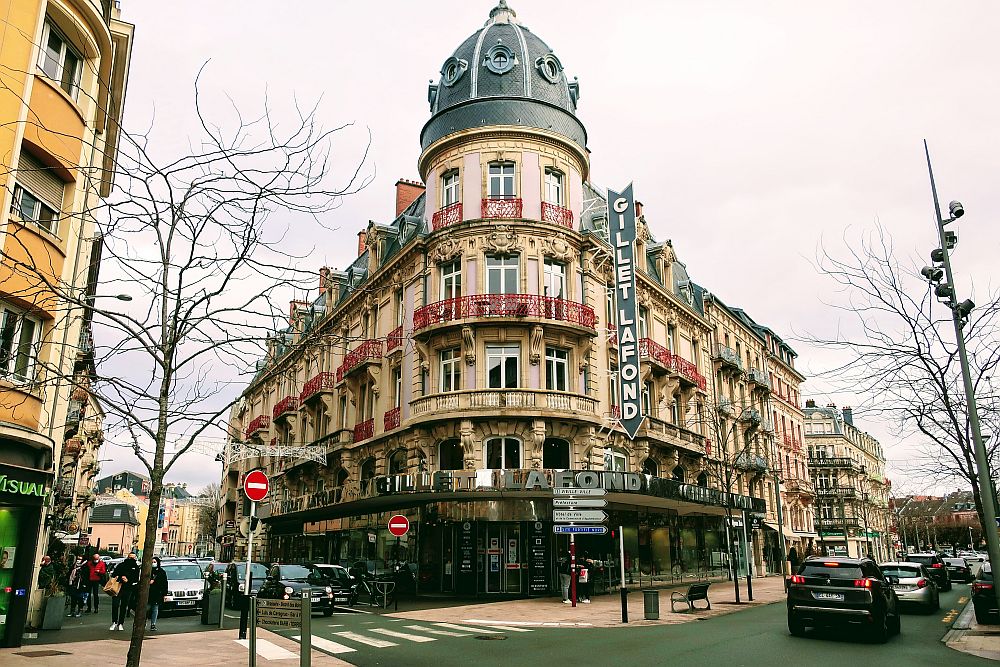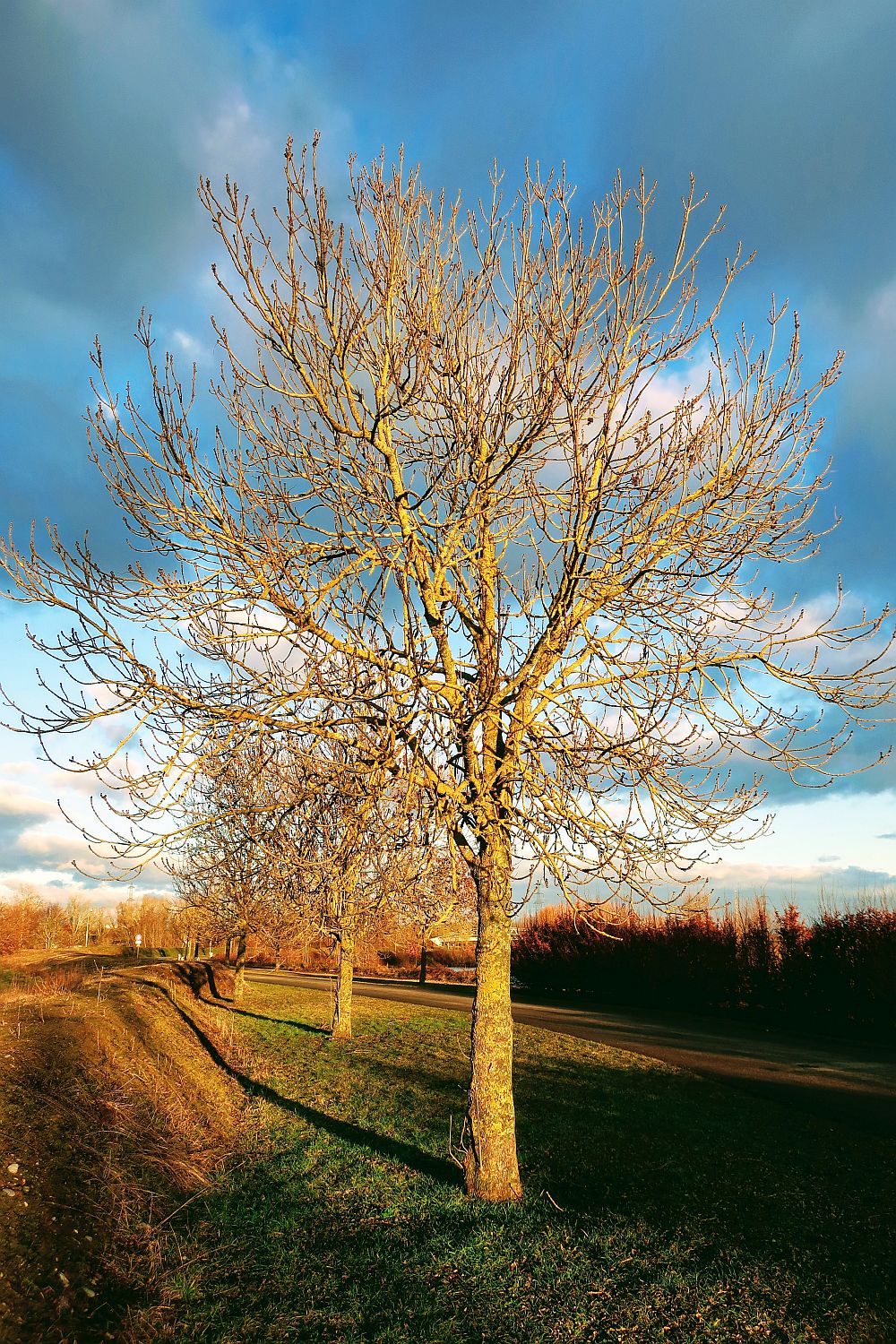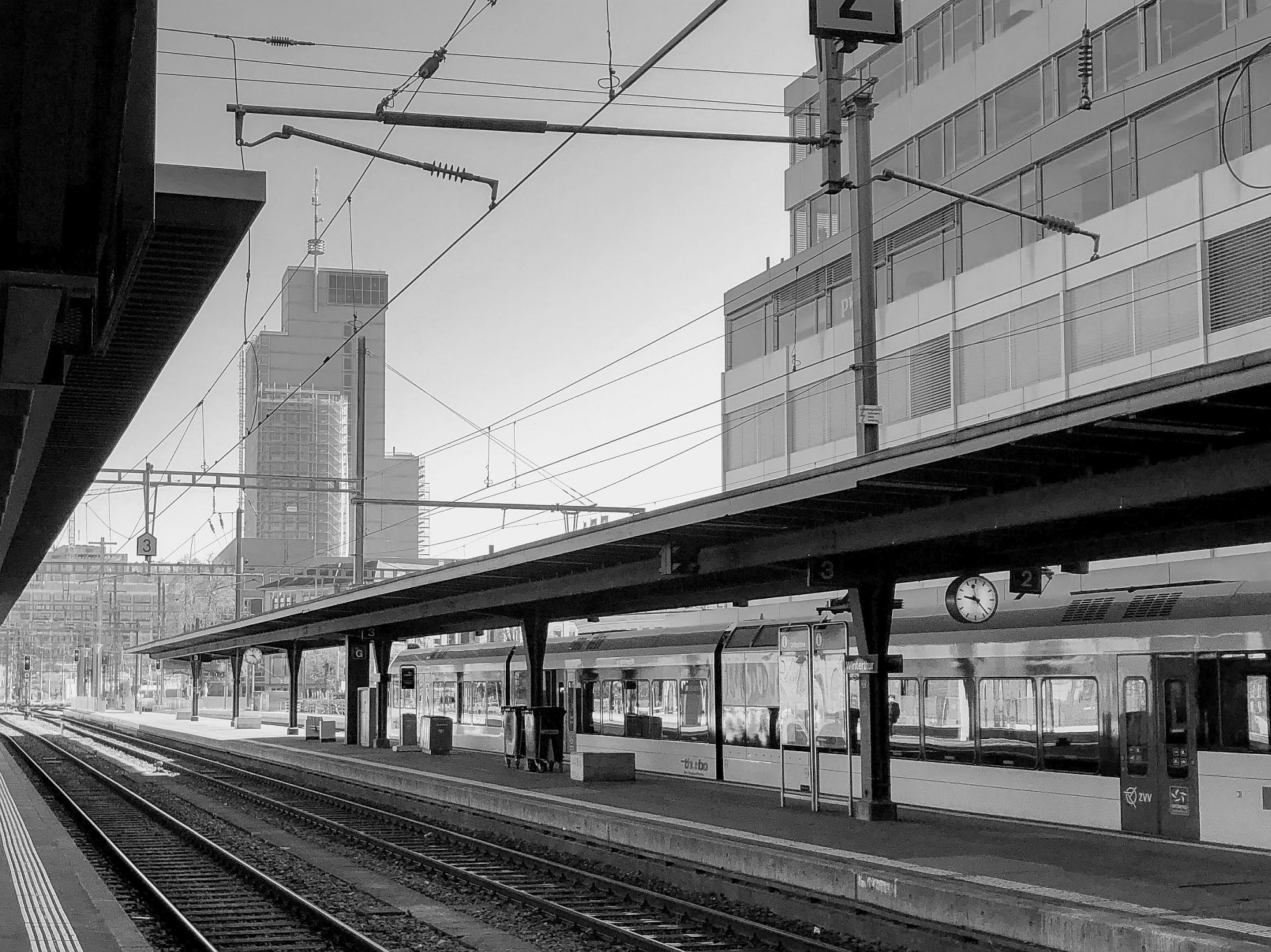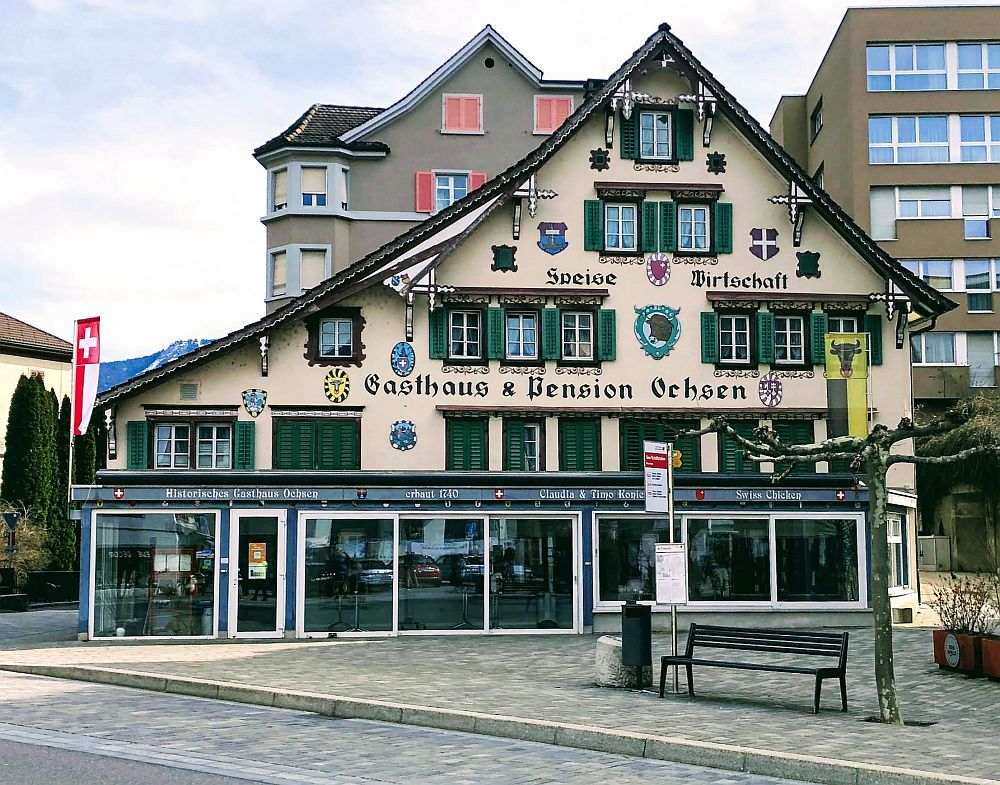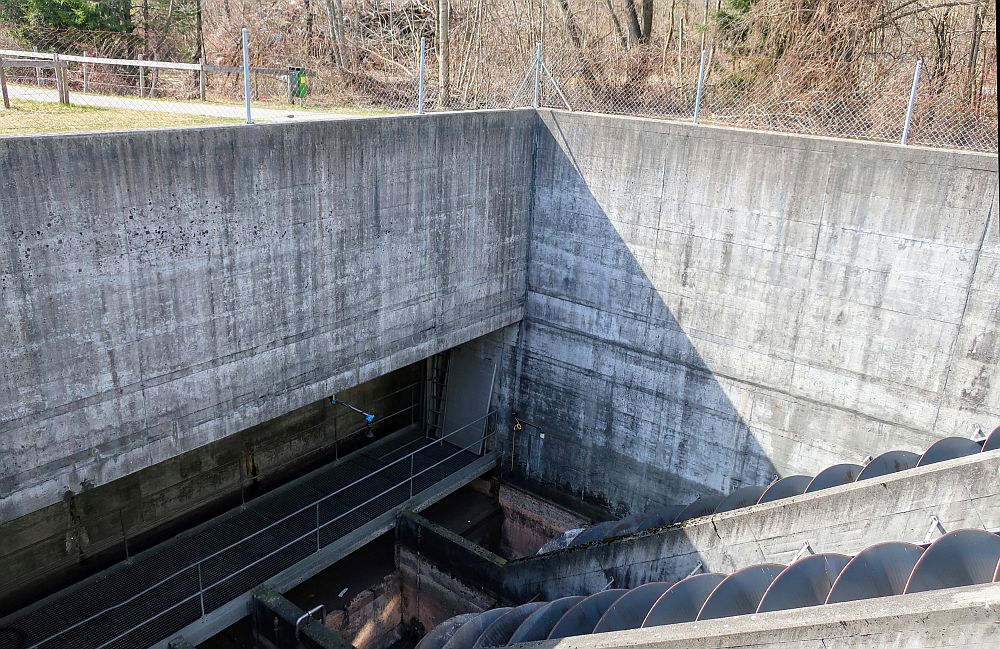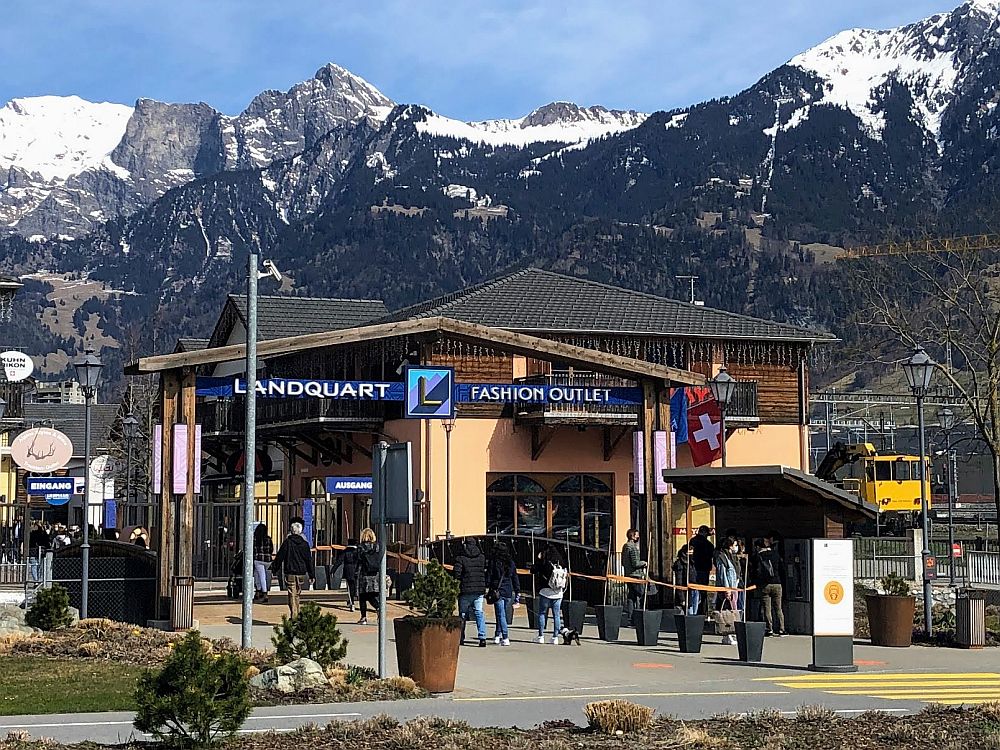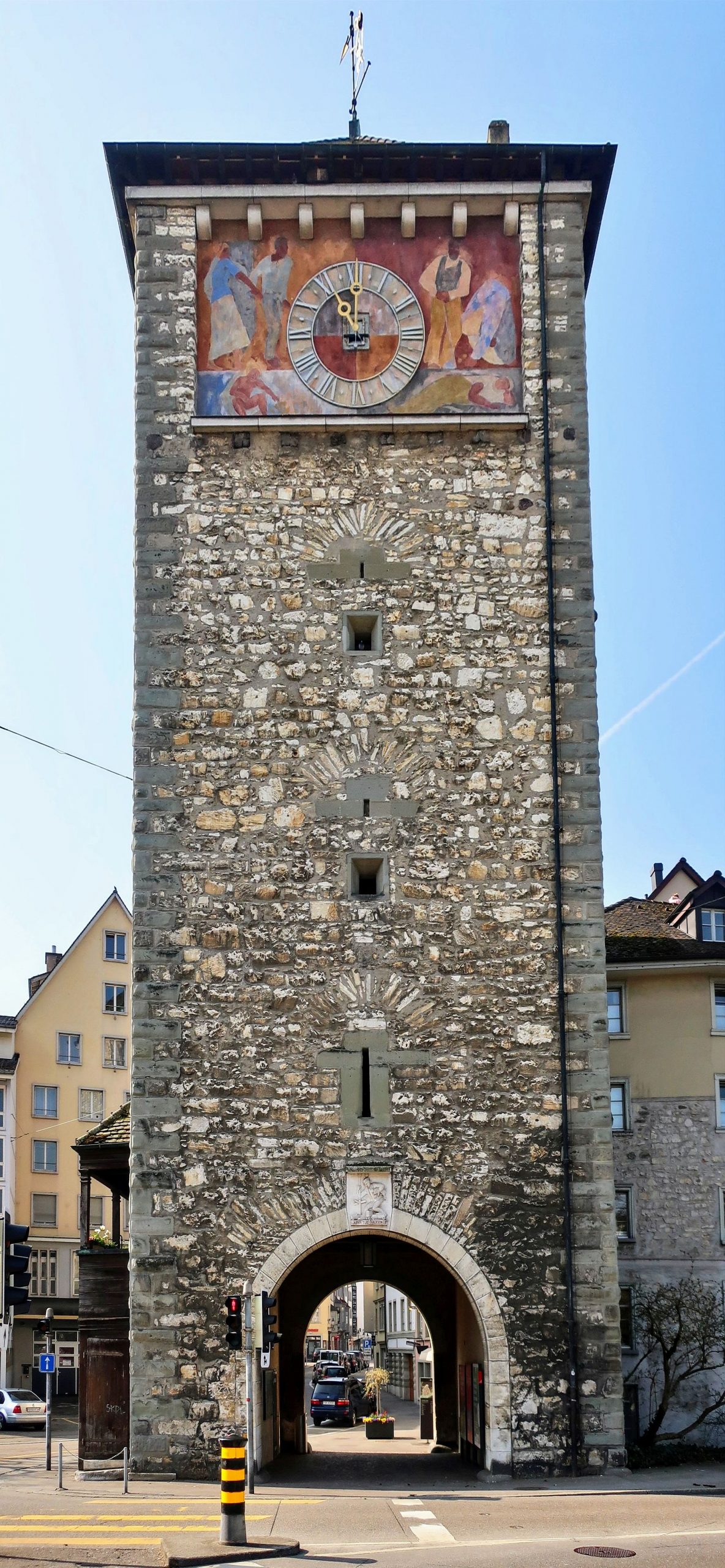You do not – under any circumstances – want to come across one of these terrify, menacing, deadly creatures in Switzerland – well, at least not if you are just a few millimeters tall. Because in fact this fellow is hardly bigger than my finger. I took this snap at the Habsburg Castle in the village of the same name, in Switzerland.
Month: April 2021
The amazing, mind-blowing subterranean stores of Bern
This is UNESCO-recognized city Bern in the Kanton of the same name, in Switzerland. There are many amazing, mind-blowing things in this snap that each deserve their own blogs:
In this blog I’ll focus on the amazing, mind-blowing subterranean stores. If you look to the bottom left, you’ll see half a woman with blond hair. That is not really half a woman – that would be silly! In fact, it is a whole woman, and this woman is standing in an entryway to a store located under the street.
This snap shows many such subterranean shops:
And if you get even closer, they look like this:
I don’t know much about the history of these subterranean shops, why for example people thought they were a good idea. I once spoke with a medieval historian (well, he was a modern historian, but his interest was the Middle Ages) and he said that the level of ground water had a huge impact on what we see today. So it is likely that Bern had a very low groundwater table – which would make sense because it is very high above a river – but that’s just a guess.
Beef Pho
Always start with the WHY.
A delicious bowl of Vietnamese beef rice-noodle soup.
Here is my first bowl of homemade beef pho, a Vietnamese soup, and it was DELICIOUS!
Like many Asian soups it’s traditionally eaten with a spoon and chopsticks, although to be honest this is a Chinese spoon and Chinese chopsticks.
But . . . how did the journey start?
Beef is expensive in Switzerland, in my view almost prohibitively so. But . . . if you are willing to buy very large portions at stores aimed at restaurateurs, you can get some terrific deals. So I started with 2.5 kg of Rinds-Entrecôte that I bought at a Swiss wholesale supermarket called Aligro, This piece cost around CHF 50, which seems like a lot of money, but I reckon I get get at least 10-12 meals from this amount, if not more, making it far less expensive than any meat I could find at the supermarket.
I then loaded a few thick slices of this into my new Ninja Foodie Multikocher, which is a combination air fryer, slow cooker, steamer, high pressure cooker. Since I have a small kitchen, my thinking here is that I could drastically reduce my cleaning needs – and so far, this has been indeed true. It is much easier to cook a wide range of things and clean up, than by using pots and pans and an oven, which no matter how careful I am, always seems to leave drips and drops and splatters on my cooktop.
I added water, an onion, two large broccoli stalks, plus authentic Vietnamese flavoring,
This is what it looked like after slow cooking for 12 hours.
I next assembled the ingredients – to be honest, many more ingredients than I’ve ever found when I was in Vietnam, but nevertheless tasty things:
Interestingly, the Swiss don’t have much of an appetite for some of these things, so I purchased the cilantro leaves at a Turkish supermarket, along with the exotic peppers. The rice noodles are from Thailand, not Vietnam.
And after adding them all together, we arrive back at the beginning.
A delicious bowl of Vietnamese beef rice-noodle soup.
Swiss mountain brook
Lightpole in Gstaad
Only in Switzerland
OK, probably not only in Switzerland. But certainly in Switzerland.
An automatic vending machine at the main train station in Gstaad that sells so-called “Alp-Cheese,” a very special type of cheese that is by law required to be made from the milk of cows that graze at very high altitudes in the Swiss Alps:
It’s on my to-do list to explore this topic further. From what I have been able to gather, there is an altitude defined by law above which the cows are required to graze; I’ve also read that the Swiss government pays a bonus to the farmers (per cow) as an incentive for them to keep this industry alive.
What the Neanderthals saw
OK, to be honest I don’t know if they would have seen this exactly, since most of the buildings were probably not here around 40’000 years ago. But I’ve recently posted about a supposed clan of Neanderthals that lived in an enclave in Switzerland and, in this way, contributed strange words to the language.
At any rate, with the colors I find it a quite pretty snap.
Venison farm
OK, I don’t know if they call it a venison farm. But that’s what it is:
I’m not sure why – quite probably due to the meat lobby – but deer meat is very uncommon in the US compared to Europe.
What I find interesting about this shot is how the deer like to remain so close to one another, and how the stag deer (shown on the right) is actually on the edge of the crowd, maybe in order to better defend them?
In addition to farmed deer, the area of north central Switzerland where I currently live is filled with wild deer. I see a few every single morning when I take my daily 10 km Nordic Walk in the nearby forest. Generally they are quite tame and usually they’ll let me walk right by them without running away.
If you want to learn more about photography, check this out!
Just finished the most difficult but also the most rewarding course I’ve taken in a long time: Photography foundations: composition.
Regarding the why – I really enjoy photography, but I have no formal training. I see something I like, and I take a picture with my little point-and-shoot. I’m not interested in lenses and apertures and f-stops and all that. So for a long time I looked for a course that would focus on content, not on technique. This course is it!
Regarding the how – it is a self-learning course available from the LinkedIn platform. You have to pay for a subscription, but then you have access to many hundreds of online courses.
Here are the learning objectives:
- Looking versus seeing
- Understanding when and why to use black and white
- Analyzing lines
- Arranging the elements into lines and shapes
- Working with perspective and symmetry
- Changing focal length, camera position, and depth
- Dividing rectangular frames into thirds
- Weighting the corners in square pictures
- Composing photographs of people
- Composing landscape photos
- Working with light: direction, texture, and negative space
- How to shoot color
- Guiding the viewer’s eye
Here’s the contents of this course:
- Understanding composition
- Seeing
- Composition fundamentals
- Geometry
- Shooting best practices
- Balance revisited
- Light
- Workshop: finding light
- Color
- Guiding the viewer
- Workshop: foreground and background
- Layers
- Post-production
- Workshop: exhibition
It’s a rather long course (5 hours and 29 minutes) – I spread it out over several weeks because there is literally too much material to digest. I’d study a chapter and learn something, then spend a few days thinking about it and trying things out with my camera.
Final thought: these are one of those courses that I’ll probably come back to again and again – and that’s a nice feature about LinkedIn, after you take a course it is still available and you can go back and watch the videos as often as you like!
The signs at Landquart – 3
Continuing the series, here is the sign you see when you approach the outlet mall by car:
I tried looking up the village of Landquart, because the name is interesting and I wanted to know more about its origin. Sadly, according to this source, no information is given other than Der Herkunft des Namens ist fraglich. This village is located in the middle eastern area of Switzerland known as Graubünden, and – even though the country is very far away – here people speak various dialects of the Romanian language, known collectively as Romansch.
A deep conspiracy hidden in plain sight – 2
Continuing the series, a snap from a different point-of-view
Mulhouse Tree
Belfort building – 4
Continuing the series, this is the church,
Belfort building – 3
Continuing the series, I think this may be the justice department building but I’m not sure and wasn’t bothered to walk over and find out:
Belfort building – 2
Belfort building
As artistic a snap as I thought I could take of a building in the French village of Belfort, in the region known as Bourgogne-Franche-Comté,
Yes, if Bourgogne sounds familiar then it probably is: it’s the original French word that is translated as Burgundy, and it’s where the French wine of the same name comes. Belfort itself is an interesting place with many historical sights and an often-flipped past; at times it belonged to Germany.
Trees at Huningue
Continuing the series, it is just amazing how the colors looked in the winter sunlight,
Pond at Huningue
Continuing the series, I thought this snap of a pond near the juncture of the Huninque Canal and the Rhein River in Alsace was quite pretty in the winter sunlight:
Winterthur tracks
I’m taking a self-learning training on LinkedIn about photography – I thought it was high time I dived in and learned from the professionals!
In this course they want you to photograph subjects in black-and-white, so you can focus exclusively on things like form, layers, perspective, etc.
For me, I like the way that the tracks and platform draw the observers attention to the skyscraper in the background.
Tourist restaurant in Ingenbohl
Continuing the series, here is a nice snap of a restaurant for tourists in the Swiss village of Ingenbohl,
The screws at Landquart – 2
Continuing the series, just across the outlet mall in Landquart there is a pumping station that is open to the air but protected by a fence:
Interestingly, there is a small creek just behind this installation, but the screws go down much, much lower (probably a good 15 m) lower than the level of the river:
Things like this really confuse me. It smelled a bit like sewage, so I assume it was somehow for dealing with sewage water. But only one of the huge screws was turning, and in fact the tiniest one. Does it receive a higher volume in the rain? Does it pump more than just sewer water? Sadly, these things are never documented anywhere that the public can easily read about them!
The stores at Landquart – 1
About an hour south of Zürich there is something usual. Very unusual. Well, very unusual for Switzerland, at any rate: an outlet mall! As a rule, Switzerland doesn’t have many of them; I know of one other in the very south of Switzerland, near Italy. And I know of two in Germany and one in France – but they are much less common than in the US.
And here’s what it looks like when you park your car:
Winterthur Building Statue
Not sure what this is – it doesn’t look old – but there are a number of them scattered throughout the north central Swiss city of Winterthur – and I find it a bit frustrating that they have these things with no plaques or explanations!
Anyway, I liked this snap, in this light, because I thought that all the colors were somehow related. I don’t know anything about colors, but I understand there are collections of them that are related.
Schwabentor at Schaffhausen – unstretched
I used Microsoft Lens to unstretch this gate, a surviving artifact of the walled city of Schaffhausen – or, in the Alemanic language, Schaffhuuse:
Seeing this up close, it makes me wonder why the skin tones of some of the people in the painting are dark? This might not seem interesting, but only about 300 m from this tower is the famous Schaffhausen Moor-fountain that portrays an Arab.
Could it be that Schaffhausen has a history involving the Arabs? It would not surprise me, since Schaffhause is easily reached from the south of France via a long series of rivers.
It’s a mystery I have to come back and clear up some day!

